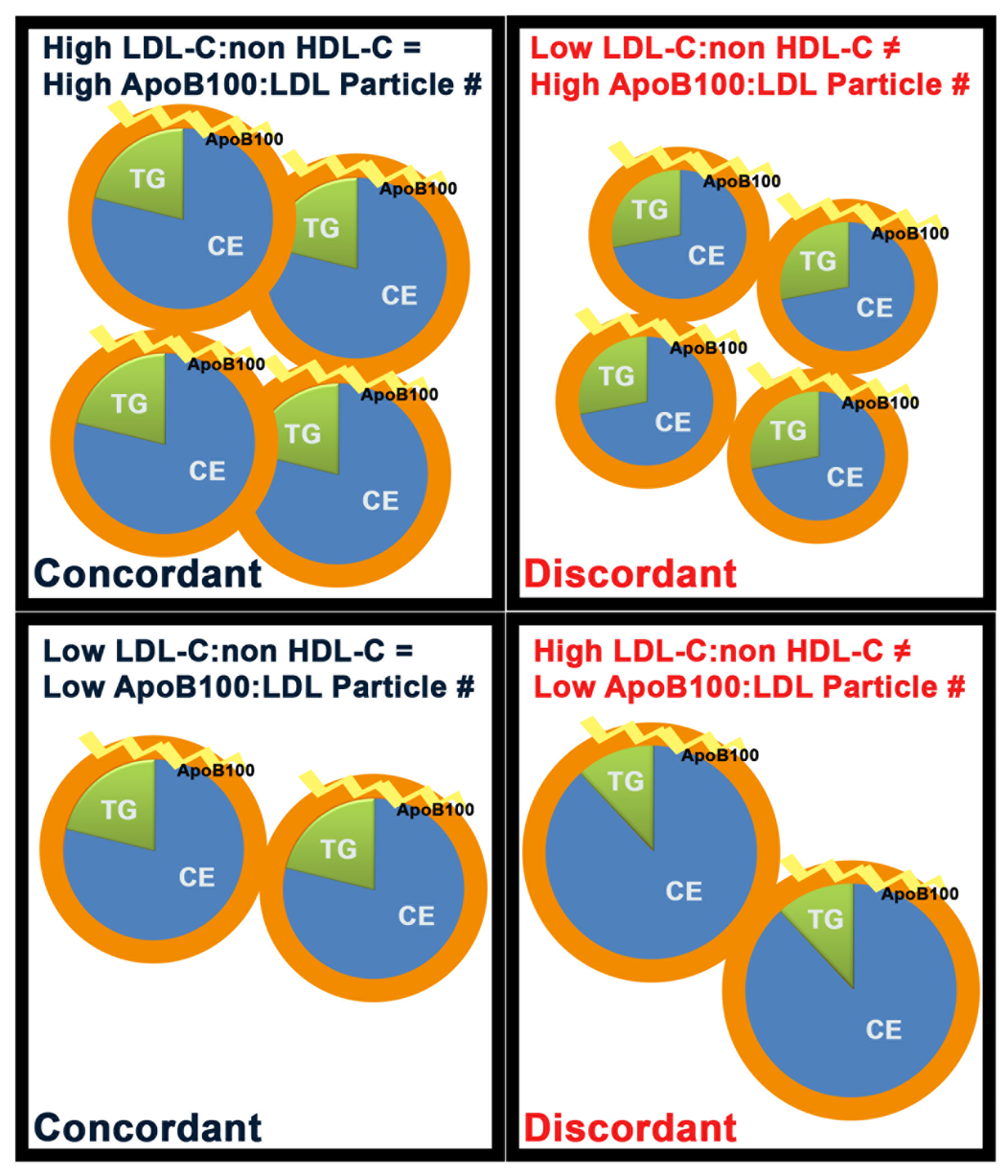
Figure 8. Schematic of the Relationship Between Measurements of LDL-C Versus ApoB100 Particle Number in Concordant and Discordant Human Populations. Subjects with hypertriglyceridemia have enhanced numbers of small dense LDL where each particle is enriched in triglyceride (TG) and relatively poor in cholesteryl ester (CE) content compared to normal subjects, and measurement of LDL-C underestimates particle numbers and apoB100 levels. Other subjects have enlarged CE-enriched LDL particles and measurement of LDL-C overestimates the number of LDL particles and apoB100 molecules. Thus, LDL particle number or apoB100 levels are a more accurate predictor of cardiovascular risk in the setting of discordance between the percentiles for measures of cholesterol carried by LDL (LDL-C or Non-HDL-C) and particle number (apoB100 or LDL-P). Adapted from Sniderman, A.D. et al. Curr Opin Lipidol 2014, 25:461–467.
